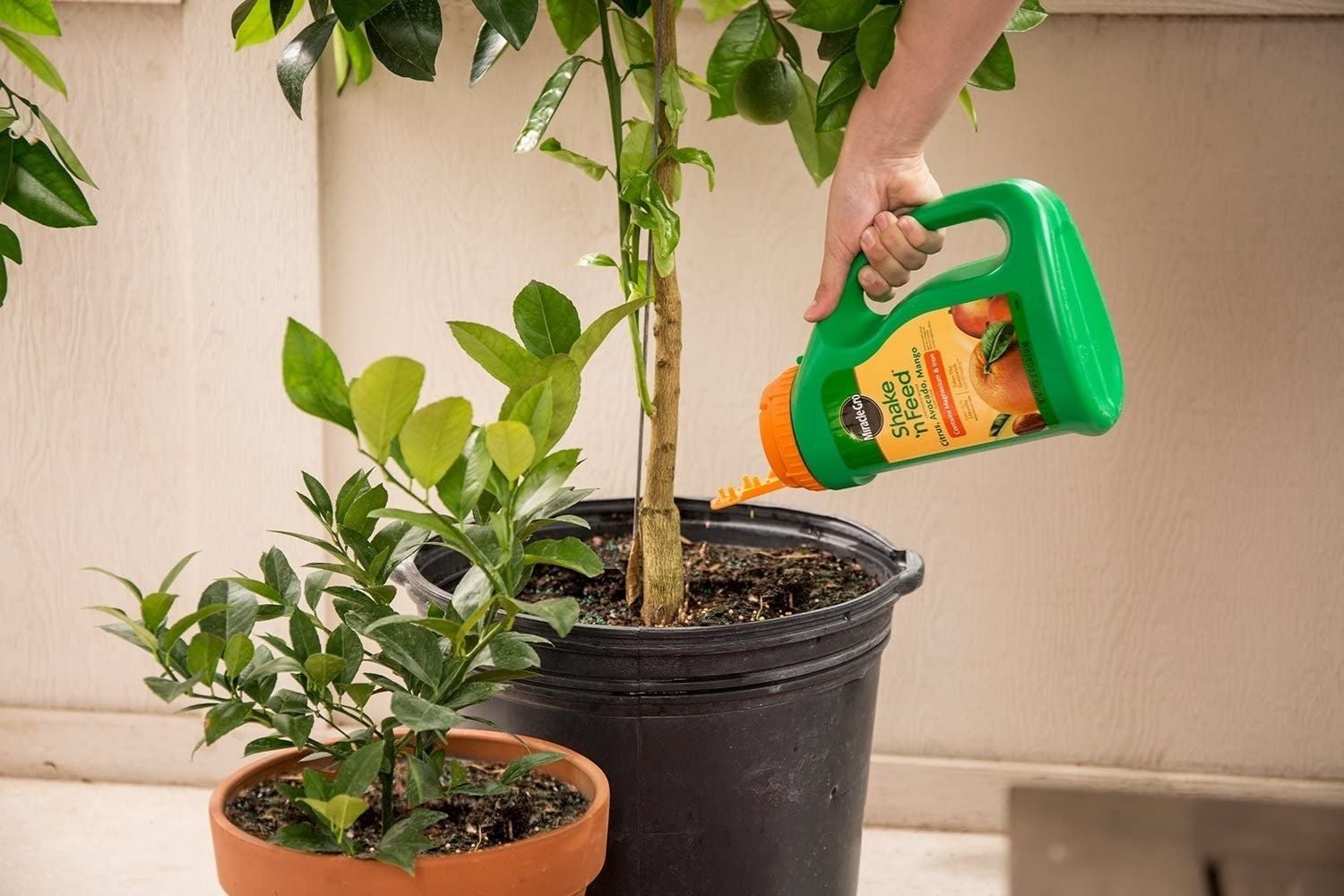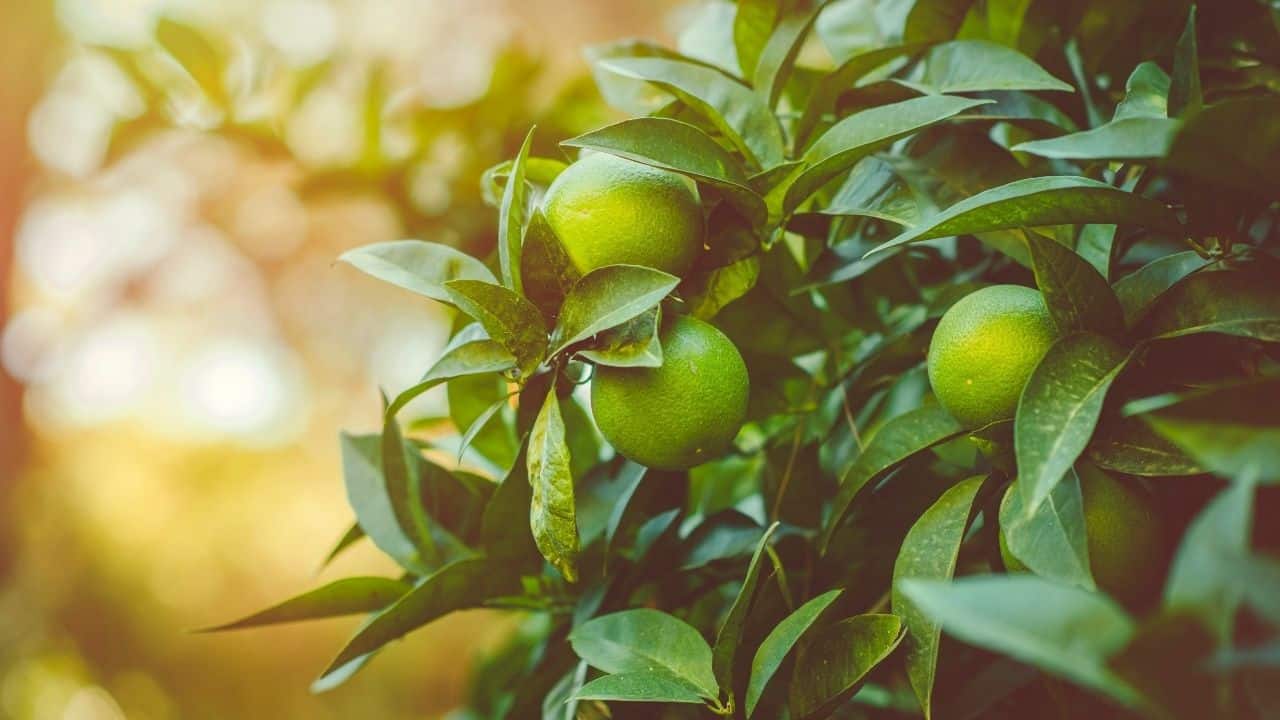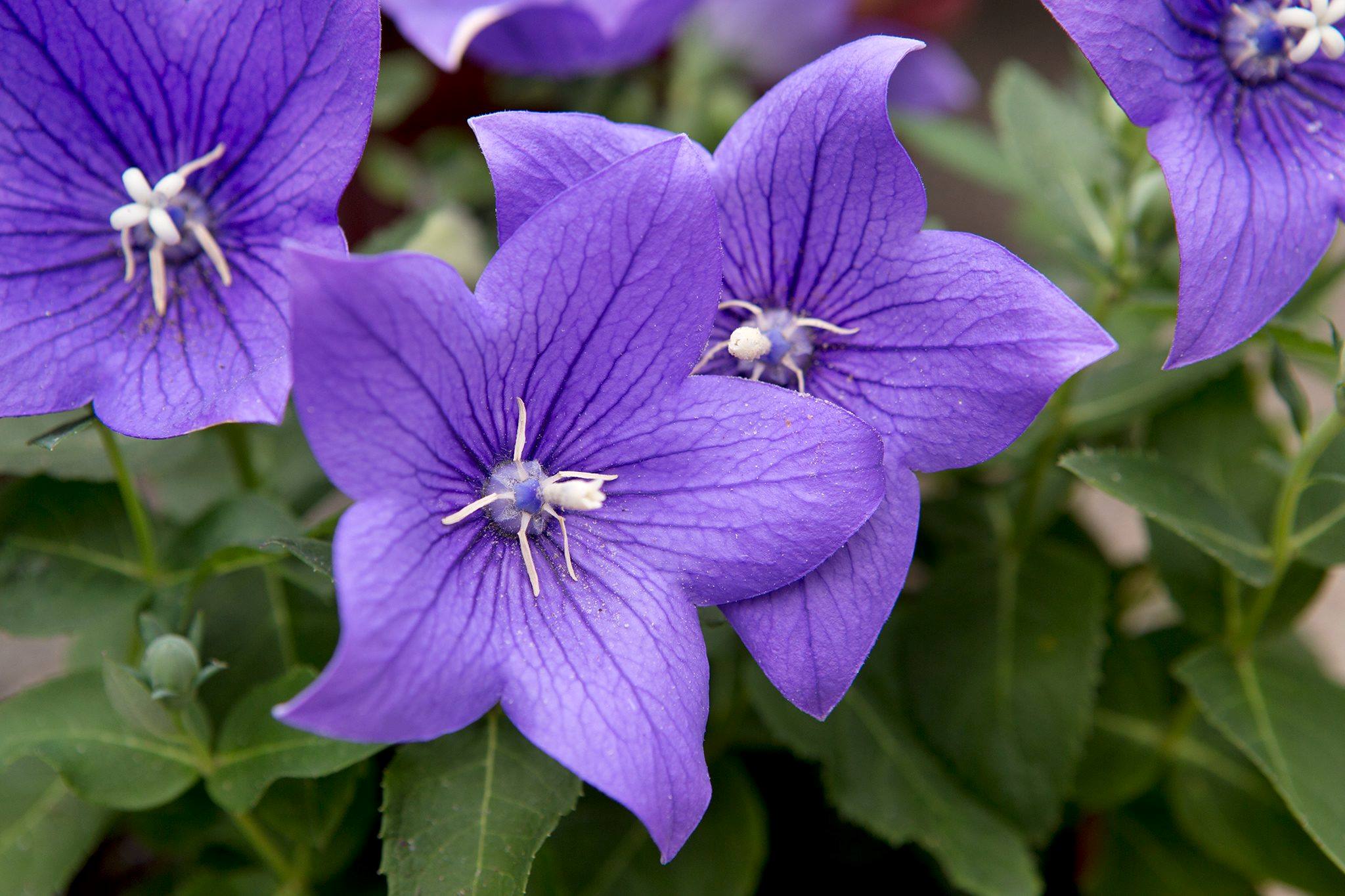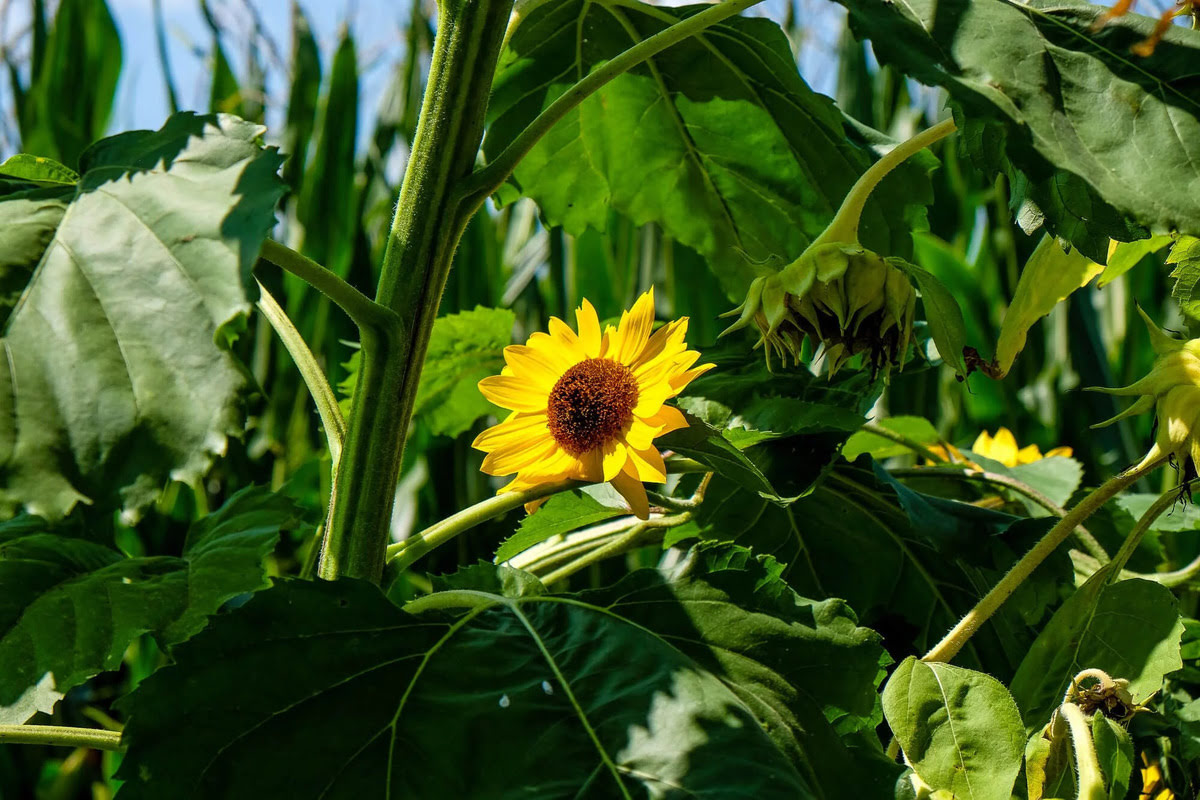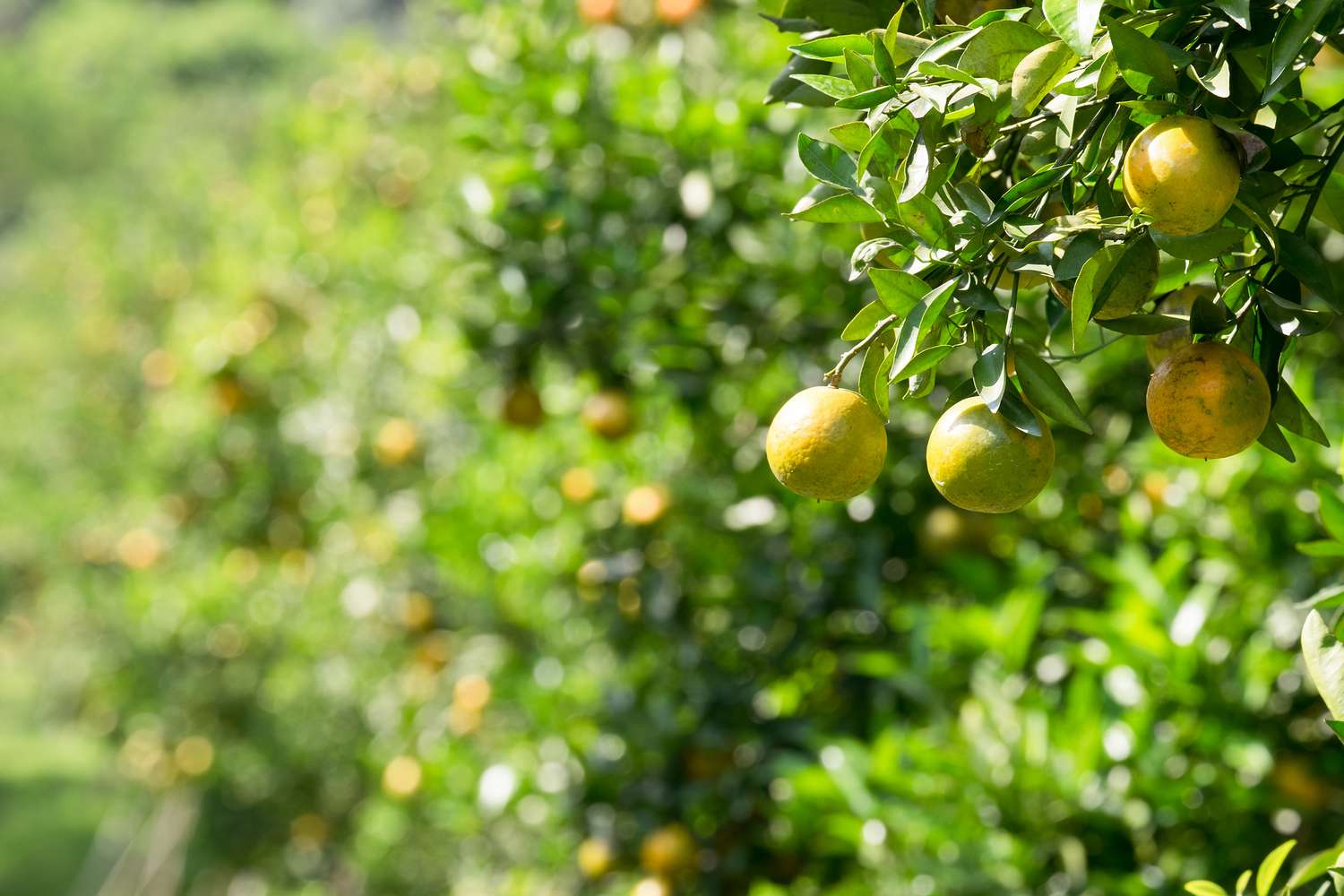Home>Gardening Techniques>Plant Care>When Do Citrus Trees Bloom


Plant Care
When Do Citrus Trees Bloom
Modified: January 22, 2024
Discover when citrus trees bloom and learn essential plant care tips to ensure healthy growth and abundant fruit.
(Many of the links in this article redirect to a specific reviewed product. Your purchase of these products through affiliate links helps to generate commission for Chicagolandgardening.com, at no extra cost. Learn more)
Table of Contents
Introduction
Welcome to the wonderful world of citrus trees! These vibrant and aromatic plants not only provide us with delicious fruits but also add beauty to our gardens and homes. If you are a proud owner of a citrus tree or considering getting one, understanding the blooming process is essential to ensure its health and productivity.
The blooming of citrus trees is a fascinating and critical stage in their lifecycle. It is during this time that the tree produces flowers, which eventually develop into the juicy fruits we know and love. However, the timing and success of blooming can be influenced by various factors, including temperature, daylight hours, watering, nutrition, and pruning.
In this article, we will explore the different factors that affect citrus tree blooming and discuss how you can optimize these conditions to encourage abundant flowers and fruit production. Whether you have a lemon, orange, grapefruit, or any other citrus variety, the information shared here will help you better understand and care for your precious tree.
Before we dive into the details, it’s essential to note that citrus trees bloom at different times depending on the specific variety and climate. Some may bloom in spring, while others may bloom in summer or even throughout the year. Understanding your tree’s natural blooming pattern will guide you in creating the ideal conditions for optimal growth and fruiting.
Now, let’s explore the fascinating world of citrus tree blooming and uncover the secrets to a bountiful harvest!
Factors Affecting Citrus Tree Blooming
Several factors play a crucial role in determining when and how well a citrus tree will bloom. Understanding these factors will help you create the ideal environment for your tree to thrive and produce an abundance of flowers and fruits. Let’s take a closer look at the main factors that influence citrus tree blooming:
1. Temperature: Citrus trees thrive in warm climates, and temperature fluctuations can significantly impact their blooming process. Generally, citrus trees require a minimum temperature of 55°F (13°C) to initiate blooming. If the temperatures drop below this threshold, the tree may enter a dormant state and delay or inhibit blooming. On the other hand, extremely high temperatures can also adversely affect blooming, causing flower drop or poor fruit set.
2. Daylight Hours: The duration of daylight hours also plays a crucial role in citrus tree blooming. Shorter daylight hours in winter can trigger flowering, while longer hours in the warmer months can encourage vegetative growth rather than blooming. Understanding the natural blooming cycle of your specific citrus variety will help you determine the ideal daylight conditions for optimal blooming.
3. Watering: Adequate watering is essential for citrus trees to bloom. Consistent and deep watering helps maintain the tree’s health and ensures proper nutrient delivery to the flowers. However, overwatering or waterlogged soil can lead to root rot and hinder blooming. Conversely, drought stress can cause flower drop and hinder fruit set. Finding the right balance and monitoring the soil moisture is crucial for encouraging blooming.
4. Nutrition: Citrus trees have specific nutritional requirements to support blooming. They need a balanced supply of nutrients, including nitrogen, phosphorus, potassium, and micronutrients. Deficiencies or imbalances in these nutrients can negatively impact blooming. Fertilizing your citrus tree with a slow-release citrus-specific fertilizer during the appropriate times of the year can help ensure it gets the nutrients it needs to bloom and fruit abundantly.
5. Pruning: Proper pruning techniques can play a significant role in promoting citrus tree blooming. Pruning helps maintain the tree’s shape, improves air circulation, and controls its size. Removing dead or diseased branches, as well as crossing or overcrowded branches, allows sunlight to penetrate the tree, stimulating the development of flowers. However, excessive pruning or incorrect timing can delay or inhibit blooming, so it’s important to follow proper pruning guidelines for citrus trees.
By considering and optimizing these factors, you can create the ideal environment for your citrus tree to bloom and thrive. In the following sections, we will delve deeper into each of these factors and provide practical tips on how to implement them effectively. Your efforts in understanding and addressing these factors will be rewarded with a vibrant and fruitful citrus tree!
Temperature Requirements for Blooming
Temperature plays a vital role in determining when citrus trees will bloom. These trees typically require a certain range of temperatures to initiate and sustain the blooming process. Understanding the temperature requirements for blooming will help you create the optimal conditions for your citrus tree to produce an abundance of flowers and fruits.
Citrus trees thrive in warm climates and are sensitive to temperature fluctuations. A minimum temperature of 55°F (13°C) is generally needed to initiate blooming. If the temperatures drop below this threshold, the tree may go into a dormant state and delay or inhibit blooming. Therefore, it is crucial to protect your citrus tree from frost in colder climates, especially during the winter months.
On the other hand, extremely high temperatures can also have a negative impact on blooming. When temperatures rise above 100°F (38°C), citrus trees may experience flower drop, where the flowers fall off before they can develop into fruits. Heat stress can also affect pollen viability and fruit set, resulting in a reduced yield. Therefore, it is important to provide shade or use measures to cool down the tree during hot summer days.
It is worth noting that different citrus varieties have varying temperature requirements for blooming. Some may be more tolerant of low or high temperatures, while others may be more sensitive. Understanding the specific temperature preferences of your citrus tree variety is essential for successful blooming.
In colder regions, where temperatures drop below the preferred range for blooming, you can take steps to protect your citrus tree and encourage blooming. One method is to cover the tree with a protective cloth or blanket during cold nights to shield it from frost. Additionally, using mulch around the base of the tree can help insulate the roots and provide some protection against temperature extremes.
In warmer regions, where temperatures consistently exceed the optimal range, you can employ strategies to mitigate the effects of heat stress. Providing shade to the tree during the hottest part of the day can help keep the temperature slightly lower and reduce the risk of flower drop. Using organic mulch around the base of the tree can also help retain moisture and moderate soil temperature.
By understanding and addressing the temperature requirements for blooming, you can create a favorable environment for your citrus tree. Monitoring the temperature fluctuations throughout the year and taking appropriate measures to protect your tree will enhance its chances of abundant blooming and ultimately result in a bountiful harvest of flavorful citrus fruits.
Daylight Hours and Blooming
The duration of daylight hours plays a significant role in the blooming process of citrus trees. Citrus trees are sensitive to changes in day length, and the amount of daylight can influence when they will bloom. Understanding the relationship between daylight hours and blooming will help you optimize the conditions for your citrus tree to produce a profusion of vibrant flowers and delicious fruits.
Generally, citrus trees require shorter daylight hours to trigger blooming. In regions with distinct seasons, this typically occurs during the cooler months when days are shorter and nights are longer. As the days begin to shorten, citrus trees receive signals to shift energy from vegetative growth to the production of flowers. This natural response ensures that the tree blooms during a favorable period, avoiding potential damage from frost or extreme temperatures.
Conversely, longer daylight hours can inhibit blooming and encourage vegetative growth. In regions with milder climates or where temperatures remain consistent year-round, citrus trees may not experience a distinct period of short daylight hours. This can result in a prolonged vegetative phase and delayed or reduced blooming.
If your citrus tree is not blooming as expected, it may be due to inadequate exposure to shorter daylight periods. To encourage blooming in such cases, you can create artificial conditions by partially shading the tree or providing it with artificial lighting during the evening hours. By mimicking shorter daylight hours, you can stimulate the blooming process and enhance fruit production.
It is important to note that the exact photoperiod requirements for blooming vary among different citrus varieties. Some citrus trees may require a shorter or longer period of daylight hours to initiate blooming. Therefore, it is crucial to research and understand the specific blooming patterns and photoperiod requirements of your citrus tree variety.
In addition to daylight hours, it is also crucial to consider other factors that can affect blooming, such as temperature, watering, and nutrition. Creating a well-rounded care regimen that takes into account all these factors will provide your citrus tree with the optimal conditions for blooming and fruitful growth.
By acknowledging the role of daylight hours in citrus tree blooming and adapting the conditions accordingly, you can encourage your tree to burst with beautiful blossoms. The sight and fragrance of the blooming citrus tree will undoubtedly bring joy and anticipation for the bountiful harvest of delectable citrus fruits to come.
The Role of Watering in Citrus Tree Blooming
Proper watering practices are essential for citrus tree blooming. Adequate and timely watering plays a vital role in maintaining the overall health and vigor of the tree, which directly affects its ability to bloom and produce an abundance of flowers and fruits. Understanding the role of watering in citrus tree blooming will help you provide the optimal moisture levels for optimal growth and blooming.
Consistent and deep watering is crucial for citrus trees. These trees have a shallow root system, so watering should be done deeply, reaching the entire root zone. Providing sufficient water ensures proper nutrient absorption and allows the tree to efficiently distribute resources to its various parts, including the flowers.
However, it is important to strike a balance with watering, as both overwatering and underwatering can have detrimental effects on blooming. Overwatering can lead to waterlogged soil, which suffocates the roots and can result in root rot. This can inhibit the tree’s ability to absorb nutrients and water, ultimately leading to poor blooming. On the other hand, underwatering can cause drought stress, which can result in flower drop and poor fruit set.
Monitoring the soil moisture is essential in determining when to water your citrus tree. Rather than relying on a set schedule, it is best to check the soil moisture using a moisture meter or by digging a small hole near the tree’s root zone to assess the moisture level. Watering should be done when the top few inches of soil are dry. This ensures that the roots have access to the necessary moisture without being waterlogged.
In addition to regular watering, it is important to consider external factors that can affect the moisture levels of the soil. For example, excessive rainfall or heavy irrigation can increase the soil moisture content, necessitating a reduction in watering frequency. Conversely, periods of drought or high temperatures may require you to increase watering to prevent drought stress.
It is worth noting that the specific water requirements can vary depending on the climate, soil type, and the stage of growth of your citrus tree. During periods of active growth and blooming, your tree may require more frequent watering to support the increased demand for water and nutrients. Adjusting your watering practices accordingly will help ensure optimal blooming and fruiting.
By providing proper and consistent watering, you can create an environment in which your citrus tree thrives and blooms to its full potential. Monitoring soil moisture, adjusting watering practices based on external conditions, and maintaining a balance between overwatering and underwatering will help you achieve successful blooming and enjoy the bountiful harvest of flavorful citrus fruits.
Nutritional Needs for Blooming
Proper nutrition is vital for citrus tree blooming. Citrus trees have specific nutrient requirements to support their growth, development, and production of flowers and fruits. Understanding and meeting these nutritional needs will help ensure that your citrus tree is healthy and capable of producing abundant blooms.
There are several key nutrients that citrus trees require for successful blooming. These include nitrogen (N), phosphorus (P), potassium (K), and various micronutrients. Nitrogen is essential for overall plant growth and the production of chlorophyll, which is responsible for the green color in leaves and essential for photosynthesis. Phosphorus aids in energy transfer and is crucial for flower and root development. Potassium is important for overall tree health, disease resistance, and the production of high-quality fruit.
While citrus trees can absorb nutrients from the soil, the availability and balance of these nutrients can vary depending on soil conditions. Therefore, it is essential to provide additional fertilization to ensure that the tree receives the necessary nutrients for blooming. Using a slow-release citrus-specific fertilizer is recommended, as it provides a steady supply of nutrients over an extended period.
The timing of fertilization is also crucial for blooming. Citrus trees should be fertilized in early spring, just before the blooming period. This allows the tree to access the nutrients it needs for flower development and fruit set. Additionally, a second round of fertilization can be applied in late spring or early summer to support the growth of young fruits.
In addition to the primary macronutrients (nitrogen, phosphorus, and potassium), citrus trees also require various micronutrients for optimal blooming. These include iron, manganese, zinc, copper, and boron. These micronutrients are often present in small amounts in the soil, but deficiencies can occur, especially in alkaline or sandy soils. It is advisable to perform a soil test to assess the nutrient levels and adjust fertilization accordingly.
It is important to note that while proper nutrition is crucial for blooming, excessive fertilization can be detrimental. Overapplication of fertilizers, particularly those high in nitrogen, can lead to excessive vegetative growth at the expense of blooming. It is essential to follow the recommended dosage and application instructions provided by the fertilizer manufacturer.
Monitoring the overall health of your citrus tree is essential in determining if it is receiving adequate nutrition. Signs of nutrient deficiencies such as yellowing leaves, stunted growth, or poor flowering may indicate the need for adjustments in fertilization. Regularly inspect your tree and make any necessary adjustments to ensure it receives the proper nutrients for optimal blooming and fruiting.
By understanding the nutritional needs of your citrus tree and providing the appropriate fertilization, you can ensure that it receives the essential nutrients for healthy growth and abundant blooming. A well-nourished tree will reward you with a magnificent display of flowers and an abundance of delicious citrus fruits.
Pruning and Blooming
Pruning is an important practice that influences the blooming of citrus trees. Proper pruning helps maintain the tree’s shape, promotes airflow, controls size, and stimulates the development of flowers. Understanding the relationship between pruning and blooming will enable you to effectively shape and care for your citrus tree to achieve optimal blooming and fruit production.
Pruning citrus trees should be done with a purpose. When pruning for blooming, the main objective is to allow sunlight to penetrate the tree’s canopy, reaching the inner branches and stimulating flower development. This is accomplished by removing dead, diseased, or crossing branches, as well as any excessive growth that may shade the interior of the tree.
Timing is essential when pruning citrus trees for blooming. Pruning should be done during the dormant period, typically in late winter or early spring before the flowering season. This ensures that the tree has ample time to recover from the pruning process and produce new growth that will develop flowers.
It is recommended to follow proper pruning guidelines for citrus trees to achieve the desired results. Pruning cuts should be made at a slight angle and just above a leaf node or bud. This promotes proper healing and growth in the direction of the remaining bud. Avoid leaving stubs or making excessive cuts, as this can weaken the tree and hinder its ability to produce flowers.
In addition to shaping the canopy, pruning can also help manage the overall size of the tree. Controlling the size is important to ensure that the tree receives adequate sunlight and air circulation. Overly dense canopies can lead to poor blooming due to reduced sunlight penetration, increased humidity, and poor air movement. Pruning can help open up the canopy, allowing better light penetration and air circulation, which promotes flower development.
However, it is crucial not to overprune citrus trees, as this can have a negative impact on blooming. Excessive pruning can shock the tree and delay or inhibit the blooming process. It is best to follow the general rule of not removing more than one-third of the tree’s canopy in a single pruning session.
Regular maintenance pruning throughout the year, such as removing dead or diseased branches and keeping the tree’s shape in check, will also contribute to optimal blooming. It is important to maintain a balance between keeping the tree healthy and promoting new growth, while avoiding excessive pruning that can stress the tree.
By following proper pruning practices and timing, you can shape your citrus tree for maximum sunlight penetration, airflow, and flower development. Regular maintenance pruning and monitoring the tree’s growth will help create a well-balanced canopy that encourages blooming and sets the stage for a productive harvest of delicious citrus fruits.
Common Bloom-Inducing Disorders in Citrus Trees
While citrus trees are generally resilient and productive, they can sometimes experience disorders that hinder blooming. These disorders can affect the tree’s ability to produce flowers or cause the premature dropping of flowers, resulting in reduced fruit production. Understanding some of the common bloom-inducing disorders in citrus trees will help you identify and address these issues to promote optimal blooming.
1. Flower Bud Dropping: Flower bud dropping is a common disorder that can occur in citrus trees. It is characterized by the premature shedding of flower buds before they have the chance to fully develop into fruits. Flower bud dropping can be caused by various factors, such as temperature extremes, nutrient deficiencies, inadequate pollination, drought stress, or excessive moisture. Providing proper care, including consistent watering, balanced fertilization, and appropriate pest control, can help mitigate this disorder.
2. Flower Malformation: Flower malformation is another bloom-inducing disorder in citrus trees. It is characterized by the abnormal development of flowers, resulting in deformed or non-functional blooms. Flower malformation can be caused by viral infections, nutrient imbalances, fungal diseases, or genetic factors. Regular inspection and early detection of flower malformation can help mitigate its impact on fruit production. Proper sanitation, pest management, and providing optimal nutrition can help prevent or reduce the occurrence of this disorder.
3. Alternaria Flower and Fruit Rot: Alternaria flower and fruit rot is a fungal disease that can affect citrus tree blooming. It manifests as black or brown spots on flowers and fruits, which can lead to flower drop or premature fruit rot. This disease thrives in humid conditions, particularly during periods of extended rain or excessive irrigation. To prevent alternaria flower and fruit rot, it is important to avoid overwatering, promote good air circulation, and promptly remove and dispose of any infected plant material.
4. Citrus Canker: Citrus canker is a bacterial disease that affects various parts of the citrus tree, including the flowers and fruits. It appears as raised lesions with an oily or corky texture on the surface of the plant tissue. When citrus canker affects flowers, it can cause flower drop and hinder fruit set. Proper sanitation measures and regular inspections are crucial in managing citrus canker. Infected plant material should be pruned and disposed of to prevent the spread of the disease.
5. Citrus Tristeza Virus: The citrus tristeza virus can lead to significant bloom-inducing disorders in citrus trees. It is a viral disease that affects the overall health and productivity of the tree, including blooming and fruiting. Symptoms may include stunted growth, yellowing of leaves, and reduced flower production. Managing citrus tristeza virus involves using virus-free plant material, practicing good sanitation, and monitoring for any signs of infection.
By being aware of these common bloom-inducing disorders, you can take proactive measures to prevent and manage them in your citrus trees. Following good cultural practices, providing proper nutrition, implementing regular monitoring and inspection, and promptly addressing any issues will help ensure the health and productivity of your citrus tree’s blooming season.
Conclusion
Caring for your citrus tree and promoting optimal blooming is a rewarding and fulfilling endeavor. By understanding the various factors that influence blooming, such as temperature, daylight hours, watering, nutrition, and pruning, you can create the ideal conditions for your tree to produce a profusion of vibrant flowers and delicious fruits.
Temperature is a critical factor in citrus tree blooming, as it determines when the tree will enter its blooming phase. Providing protection from extreme temperatures and ensuring that the tree remains within the preferred temperature range will enhance its blooming potential.
Daylight hours play a significant role in triggering citrus tree blooming. Shorter daylight periods signal the tree to transition from vegetative growth to flower development. By understanding your tree’s natural blooming cycle and making adjustments to mimic shorter daylight hours as needed, you can encourage blooming.
Proper watering practices are essential for citrus tree blooming. Balancing adequate irrigation with avoiding overwatering or underwatering will ensure that your tree has the necessary moisture for optimal blooming and fruit production.
Nutrition is crucial for citrus tree blooming, and providing the right balance of nutrients is key. Fertilizing your tree during the appropriate times and addressing any nutrient deficiencies will support healthy growth and abundant blooming.
Pruning is an important aspect of citrus tree care that influences blooming. Proper pruning techniques and timing can create an open canopy that allows sunlight to penetrate, stimulates flower development, and enhances overall blooming potential.
Finally, being aware of common bloom-inducing disorders, such as flower bud dropping, flower malformation, fungal diseases, and viral infections, enables you to detect and manage these issues early on. Regular inspection, proper sanitation, and timely interventions will help maintain a healthy blooming season for your citrus tree.
By nurturing your citrus tree with the knowledge and practices outlined in this article, you are setting yourself up for a bountiful harvest of flavorful citrus fruits while enjoying the beauty and fragrance of vibrant blooms. Remember to monitor your tree’s progress, adjust care practices as needed, and most importantly, appreciate the joy and satisfaction that comes from successfully caring for your citrus tree.

